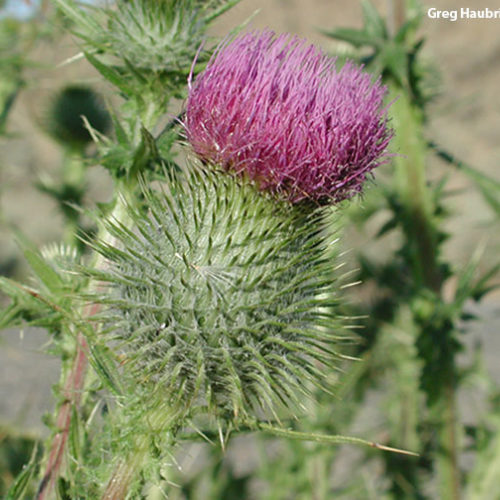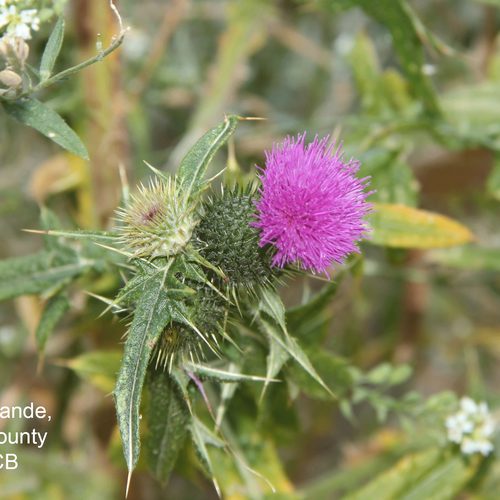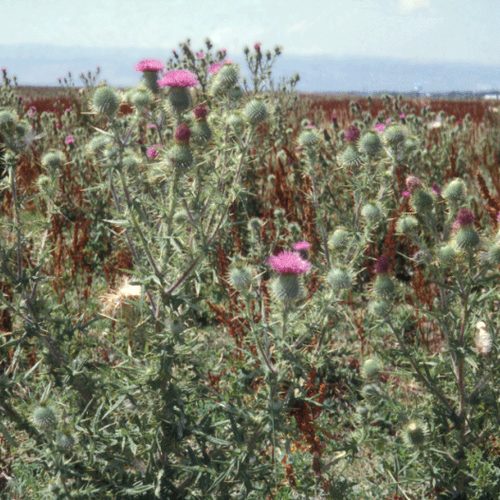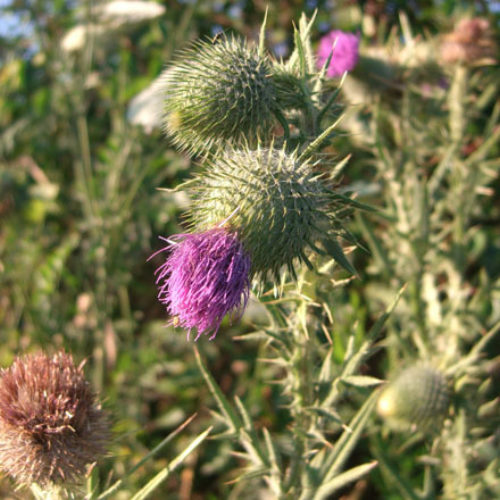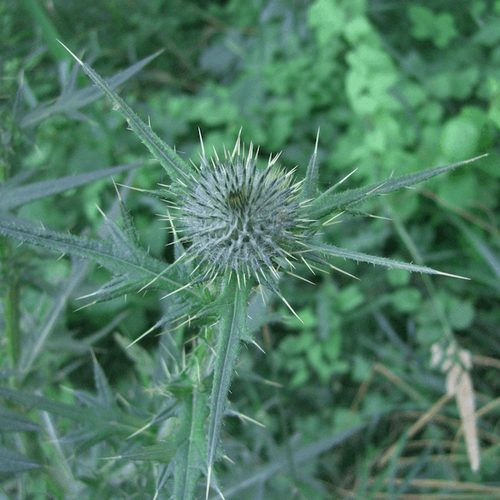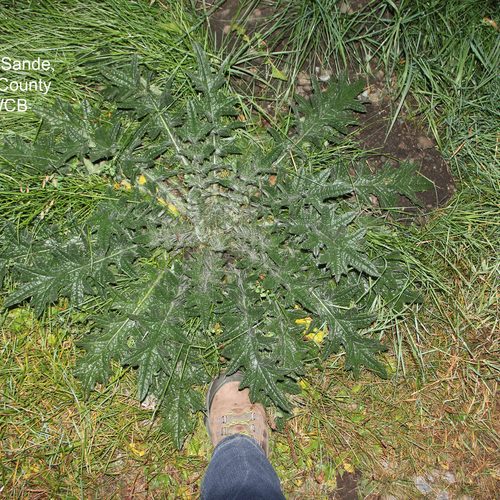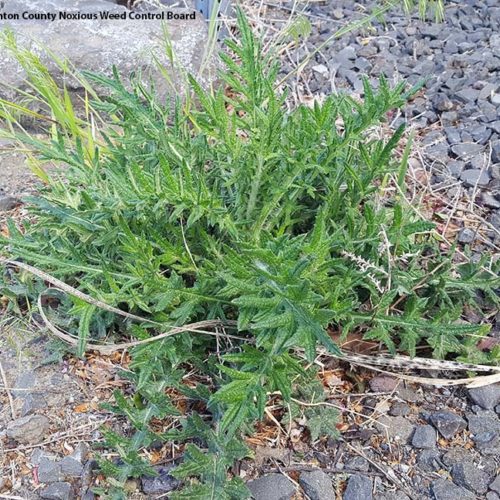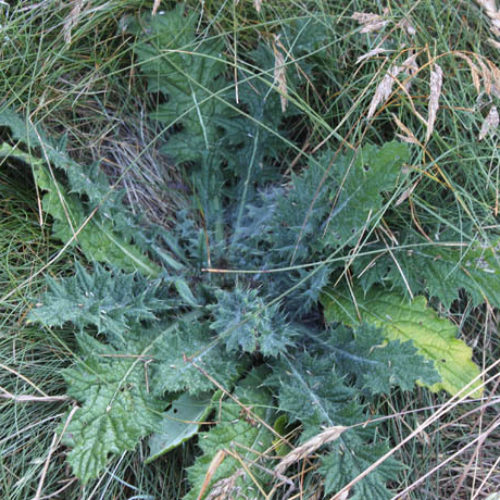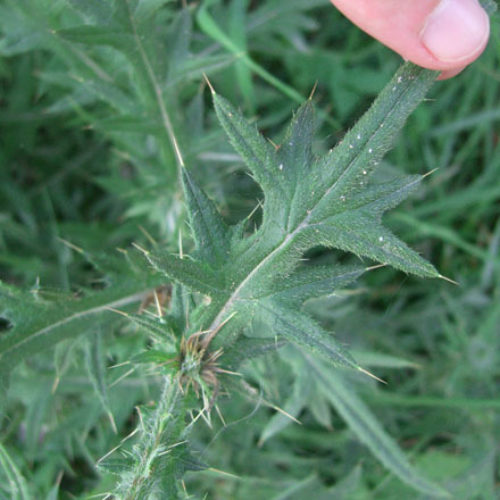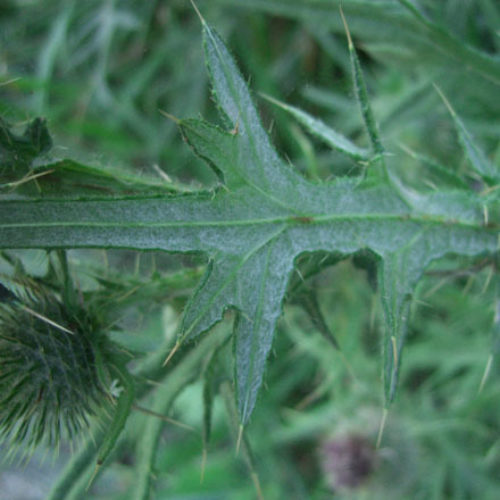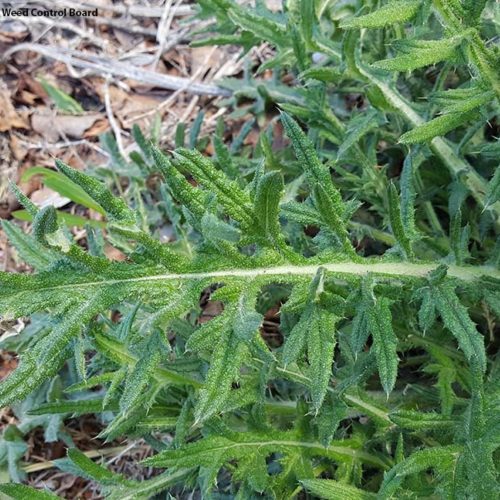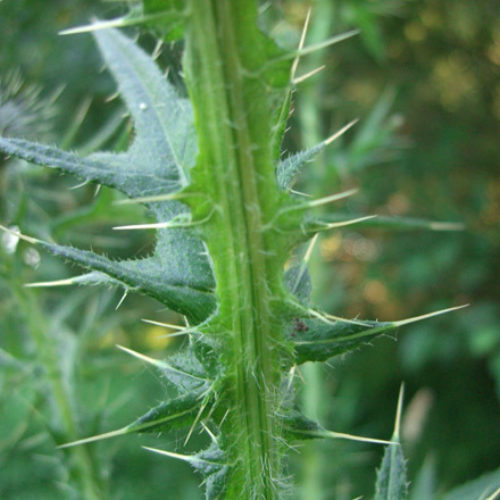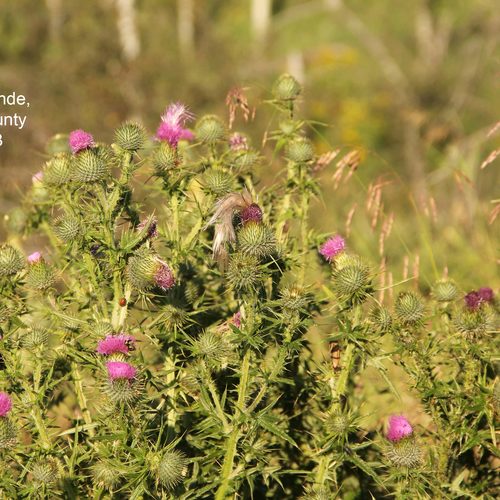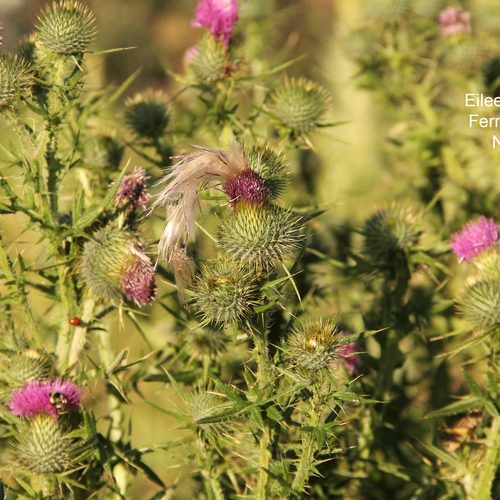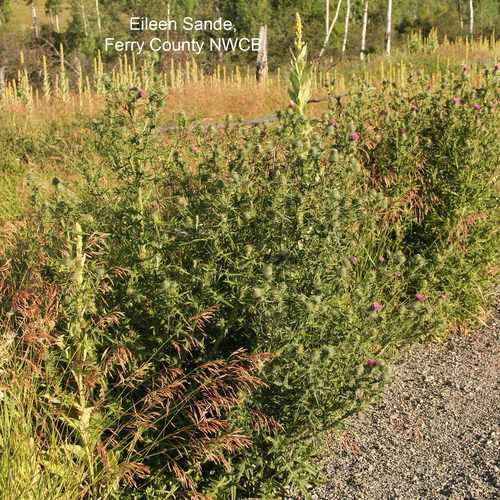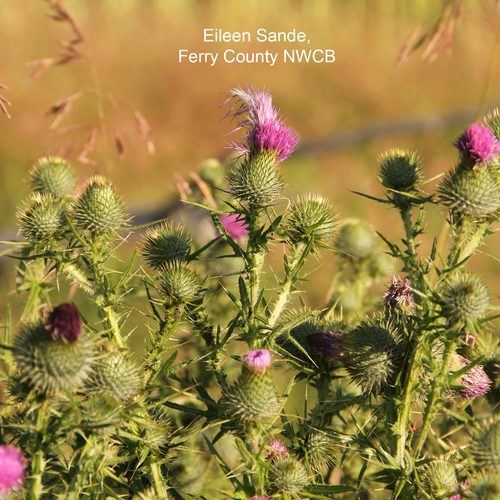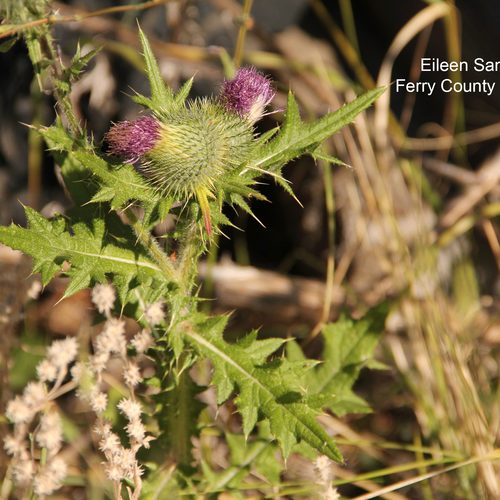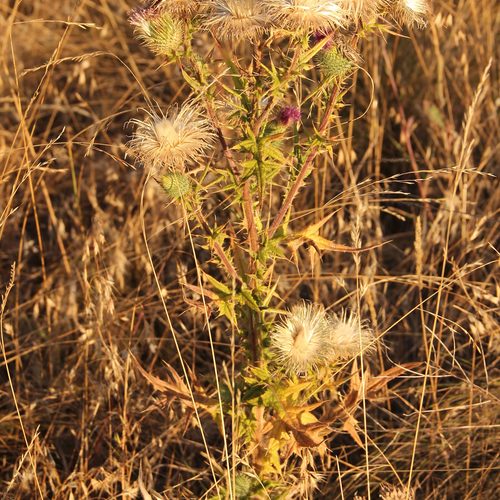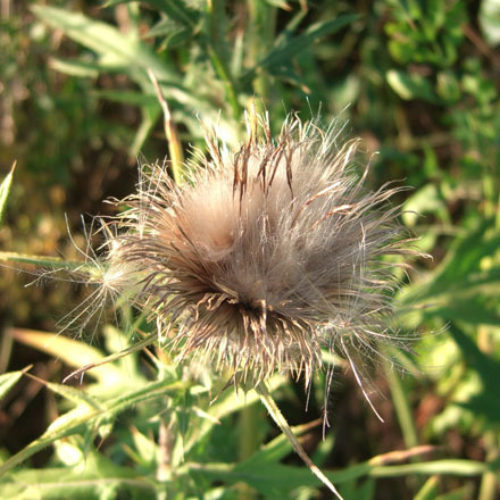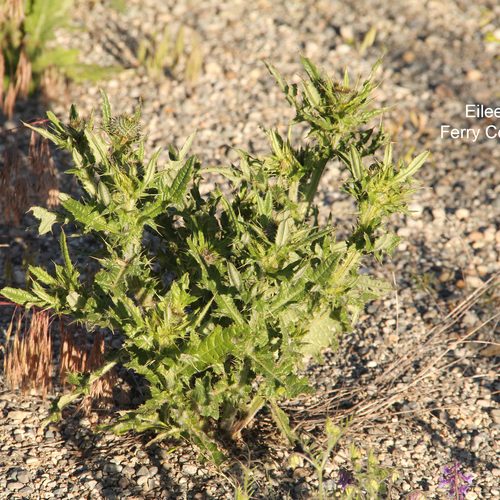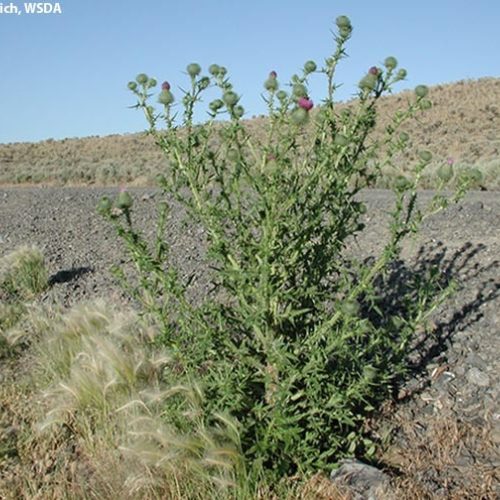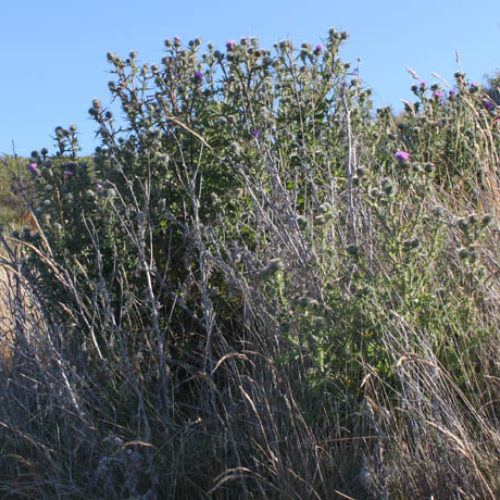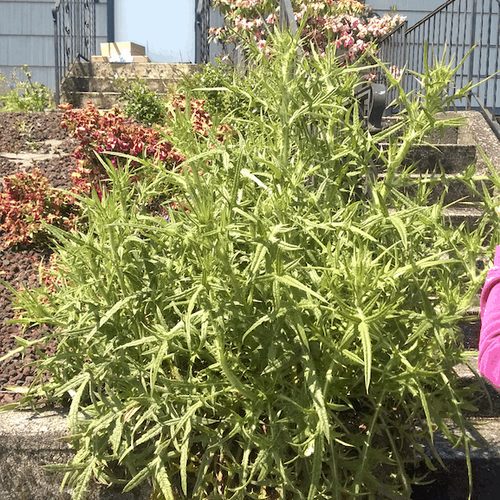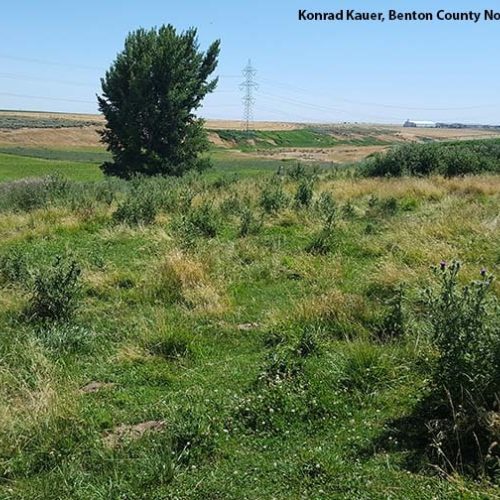Bull Thistle
Cirsium vulgare
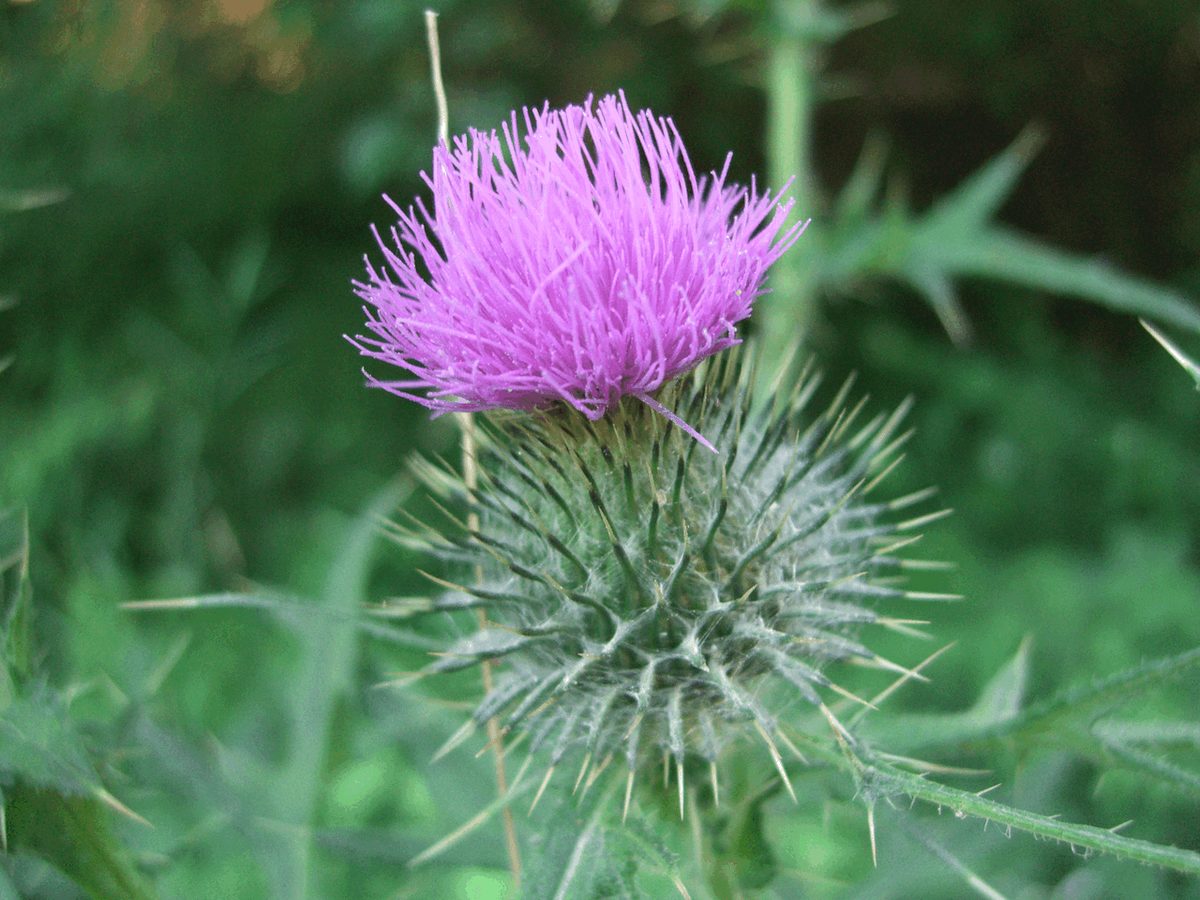
Family: Asteraceae
Weed class: C
Year Listed: 1988
Native to: Europe, Asia and Northern Africa
Is this Weed Toxic?:
not known to be
Why Is It a Noxious Weed?
Bull thistle may outcompete native plants and desirable wildlife and livestock forage plants. It can invade most any disturbed habitat and grow in dense thickets. Hay price may decline with the presence of bull thistle.
How would I identify it?
General Description
Bull thistle is a biennial herbaceous plant growing between 3 to 7 feet tall with one upright branched stem. It grows a rosette (cluster of radiating leaves at plant base) in its first year and blooms in its second year.
Flower Description
Flowerheads many, 1.5 to 2 inches in diameter. Bracts at base of flowerheads are spine-tipped. Flowers are purple or rarely white, blooming July through September.
Leaf description
Leaves alternate and coarsely lobed. Each lobe has a spined tip. Leaf bases extend downward from the leaves along prominent ridges of the stem. Upper leaf surface is rough with bristle-like spines while the undersides are covered with white woolly hairs.
Stem description
Stems are spiny-winged from leaf bases extending downward producing a winged ridge effect.
Fruit Seed Description
Seeds are less than 0.16 inches (4 mm) long.
Where does it grow?
Bull thistle colonizes primarily in disturbed areas such as pastures, roadsides, and ditch banks as well as in hayfields, disturbed prairies and logged mountain areas. Please click here to see a county level distribution map of bull thistle in Washington.
How Does it Reproduce?
Bull thistle reproduces by seed and not by vegetative means.
How Do I Control It?
Mechanical Control
Hand-pull and dispose of flowering plants in trash to prevent seed spread. Mowing can be effective, but make sure the plants do not flower. If cut too early before flowering, plants may re-sprout and flower again that season. Remove stems from site if plants are cut or pulled with flowers.
Biological Control
Bull thistle seed production is impacted by the seedhead gall fly, Urophora stylata. This gall fly’s larvae induce and feed on gall tissue in the developing bull thistle seedhead, reducing seed production up to 60%. Urophora stylata may significantly reduce seed production if bull thistle populations are sustained for many years. For more information about the biological control of bull thistle, please visit WSU Extension Integrated Weed Control Project
Herbicide Control
Please refer to the PNW Weed Management Handbook, or contact your county noxious weed coordinator.
For More Information
See our Written Findings for more information about bull thistle (Cirsium vulgare).
Report on bull thistle from the book "Weed Control in Natural Areas in the Western United States"
Cowlitz County NWCB Fact Sheet on bull thistle
Whatcom County NWCB Fact Sheet on bull thistle
Lincoln County NWCB Fact Sheet on bull thistle
Clark County NWCB Fact Sheet on bull thistle
San Juan County NWCB Fact Sheet on bull thistle
King County NWCB Fact Sheet on bull thistle
King County NWCB Control Options for bull thistle




